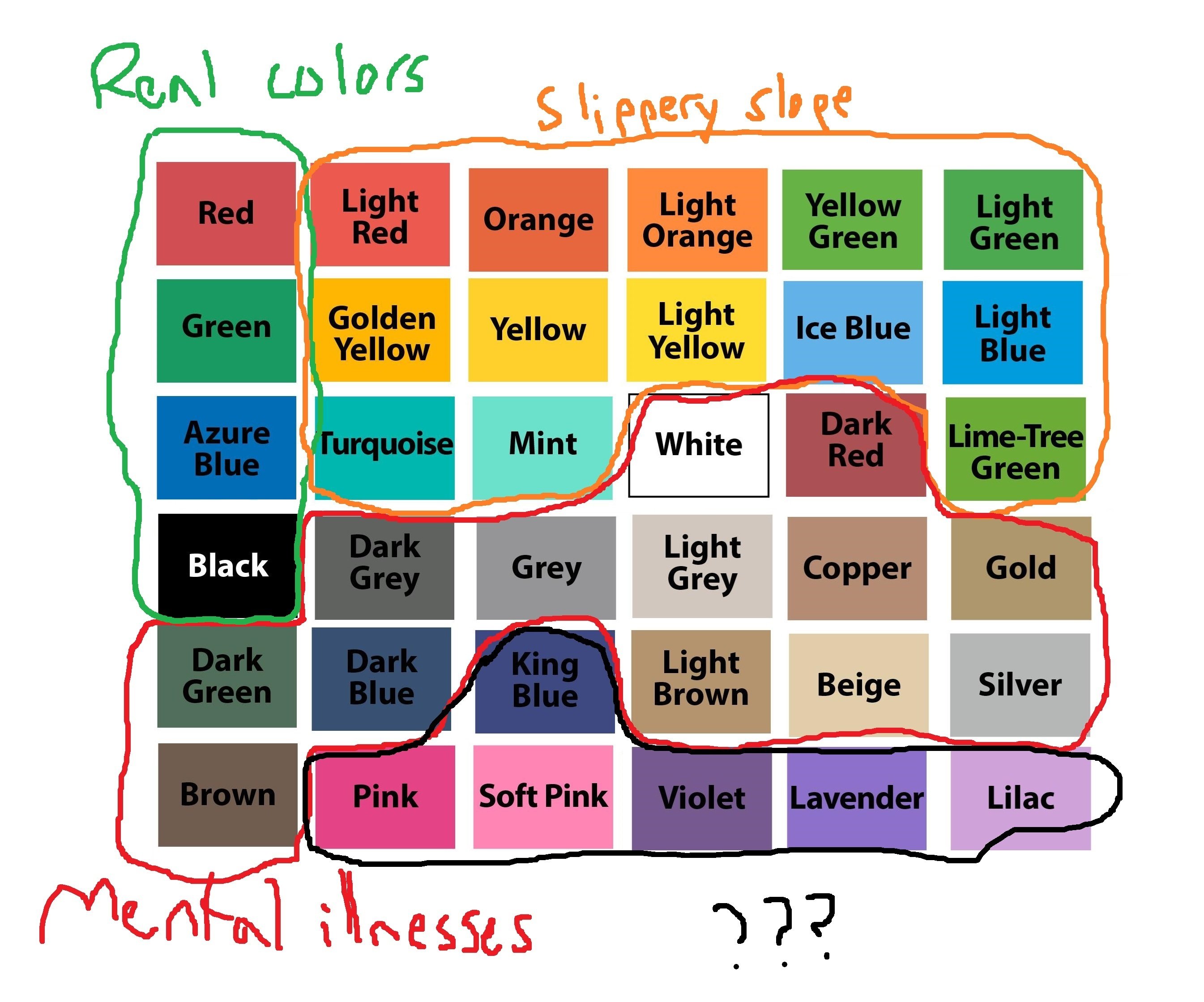this post was submitted on 24 Nov 2024
194 points (88.2% liked)
196
16848 readers
2364 users here now
Be sure to follow the rule before you head out.
Rule: You must post before you leave.
founded 2 years ago
MODERATORS
you are viewing a single comment's thread
view the rest of the comments
view the rest of the comments

Imagine taking about colors without the technique by which they are produced.
Also, did you just call black a real color when you are talking about wavelengths?
The problem with your statement is (not) fully understanding how our brains work at interpreting colors.
You mentioned yellow in this thread - our brains (not our eyes) see two different colors that they device to interpret as yellow, which is different to seeking a true yellow wavelength.
More of an everyday example of that is "white" (found under your mental illnesses) - you can buy cheap light bulbs that cover a smaller fraction of the light spectrum or better ones with high CRI numbers ("photographers lights"). I recently installed them in my parents house & they are amazed.
The other thing is we never ever see just one exact wavelength in nature, we have to mix and interpret all of them in other to make quick decisions & survive.
Evolutionary in our own line the red ones was the last addition, presumably to pick the red fruit quicker.
Also when you mention monitors (that emit light), they do all kinds of fuckery like pixel dithering where you mix two "colors" shown by the same subpixel (or two) but in a rapid succession.
I called black a real color because if we see black, we know for certain there’s actually no light.
And yes I know all that other stuff.
But how can you tell when you see cyan, if it's actually cyan wavelength or a combination of two completely separate wavelengths that your brain just averages into 'light blue' or whatever?
yea I know thats why I called it a slippery slope, because if you know for certain that there's only one wavelength in the scene then you could tell its cyan, but if it could be any spectrum then you would have no idea
So how is red not a slippery slope for the same reasons?
IDK, I can't tell from looking at the 2015 CIE CMFs (I think these are the most accurate? also I used the firefox plugin "unpaywall" to see them as sci-hub wasn't working) if there are any completely identifiable red colors or not. I initially assumed there were, but I guess I don't really know (I had assumed any perceived color could be made from a standard red green and blue, but now I also don't know if that's true).
edit: if that assumption is true than there would be no way to produce photons of different wavelengths in a way that looks like a fully saturated red
also the falloff at the end of the spectrum might mess with that a little, it looks like there is a continuously varying ratio of red to green along the end of the spectrum, but I can't really tell
edit2: it also varies somewhat with age and among individuals apparently, so that might complicate things further
And your brainhole specifics - everything gets processed like this (even monitors with subpixels use a lot of this stuff, or even why you can watch 24p movies):
wiki/White%27s_illusion
yea, there's also the afterimage / auto white balance factor
also those are fun optical illusions
mildly unrelated, but have you seen https://en.wikipedia.org/wiki/Caf%C3%A9_wall_illusion and https://www.shadertoy.com/view/4dBfWK
Yes, brains are wild!